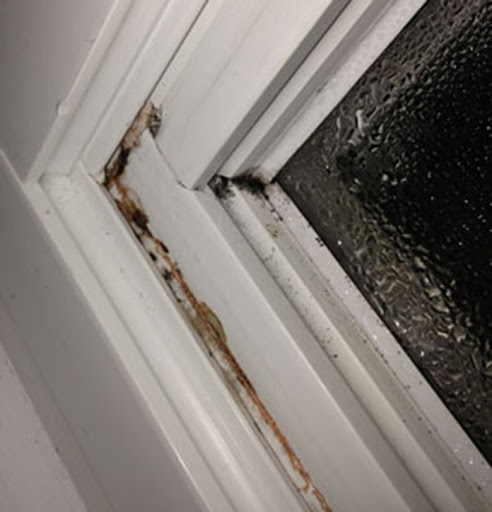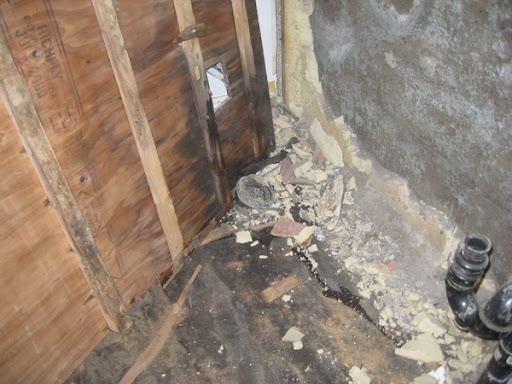Is mold really as dangerous as people say it is? Is my health really at risk if I’m exposed to mold? Are my children at a greater risk?
If you’ve asked yourself any of these questions, here are some immediate albeit brief answers: yes, yes and definitely yes!
Mold is not something to take lightly, and its effects are greater than you may think.
lso slowly destroy your home if it’s not removed as soon as possible.
Understanding mold and its effects on health
Before we discuss the effects that mold may have on your body and your property, let us explain exactly what mold is.
Molds are fungi that can be found both indoors and outdoors all year. Molds reproduce by producing tiny spores, and these spores continuously travel through the air.
When these spores land on damp indoor areas, they grow, digesting the material they’ve landed on. As long as they do this, they not only survive but they thrive.
Although it is possible for mold to grow when the weather is cold, it’s especially likely to grow when there’s warm, humid conditions.

Most mold that’s found indoors comes from an outside source unless there are other factors involved, such as water intrusion or increased humidity levels in the space at hand.
Moisture problems such as flooding, plumbing and roof leaks, and damp basements can be catalysts for mold. When excessive moisture accumulates indoors, it usually results in mold growth.
Most mold growth cannot be seen, as it grows from inside the walls toward the surface. Sometimes mold leaves an obvious scent but it will be visually undetectable.
Is mold dangerous?
The truth is that exposure to mold can lead to several side effects. Some of these side effects are minor, while some are very severe.
However, not everyone reacts the same way after being exposed to mold. Some people can be in a room that’s extremely contaminated with mold and have no reaction whatsoever, while others need only set foot into the room to feel the effects of mold exposure.
Symptoms of exposure to mold include
- coughing,
- sneezing,
- runny nose,
- eye irritation (itching or burning),
- fatigue,
- headaches,
- nausea, and
- flu-like symptoms.
Long-term exposure to mold can cause or worsen asthma and hay fever (rashes, fatigue and headaches). It can also cause dizziness, eczema, chronic fatigue, persistent headaches and memory loss (in some cases).
There are certain circumstances that tend to make some people more susceptible to the adverse health effects caused by mold exposure than others are.
The following groups, given their circumstances, tend to be more susceptible to mold-related health hazards:
- people who have a weak immune system, such as those individuals who have undergone chemotherapy;
- people who are either very old or very young;
- women who are pregnant;
- people with existing respiratory conditions.
Children, in particular, tend to experience adverse reactions to mold. A child’s developing immune system is not strong enough to fight off airborne mold spores and other contaminants, and this seriously threatens the health of newborns.
Mold can also endanger you indirectly, damaging the structural elements of a building. It can grow on support beams and other integral parts of a building until they break.
Not only does this compromise the safety of the building, but it also leads to major repair costs.
If you’re concerned about mold in your home and want to get it checked out by a professional, call Mold Busters today. Don’t waste another moment.
Types of Mold and Their Effects on Health
Indoor mold can grow and contribute to health issues. It’s produce allergens, such as irritants and toxic chemicals. Touching or inhaling mold spores may trigger an asthma attack or an allergic reaction, especially for people who are hypersensitive. Allergic symptoms that one might experience because of mold exposure include (but are not limited to) fevers, sneezing, red eyes and skin rashes. Sufferers might experience symptoms immediately, soon after, or in time. Mold can cause irritation for people both allergic and not allergic to molds.

Respiratory disease People who are exposed to mold may have respiratory problems, including difficulty breathing. If you have been affected by mold, you may cough up blood. You might also suffer from asthma or allergy attacks, bronchitis or chronic sneezing – in the case the mold spores have entered your lungs and irritated mucus membranes. These effects should not be taken lightly, as they could eventually cause your lungs to malfunction.
Gastrointestinal illness Mold may also affect mucus membranes in the stomach. People who are exposed to and infected by mold may suffer gastrointestinal problems, such as nausea and diarrhea. They may suddenly lose their appetite and lose weight.
Skin issues If you’ve come into contact with mold spores, say they’ve touched your skin, skin problems might result. Watch for red skin and itchiness. If the skin continues to be exposed to mold spores, a serious rash can develop, which you should treat immediately to avoid open sores.Toxic effects An excess of mold spores, inhaled or consumed, is poisonous. The greenish-black mold that often grows on wood, tiles and paper, produces many mycotoxins that can harm a person’s health.
Aside from wood, and other surfaces, mold also grows on food. It will usually grow on vegetables that haven’t been consumed after a few days, cheese and bread. You should throw away any food that you suspect is contaminated, and immediately. Accidentally eating mold-contaminated food may cause headaches and nausea.
If you have sinusitis, mold can worsen your condition. Maintain a mold-free home for the sake of your health and that of your family’s and also for the sake of keeping your living space clean.
Notably, black mold is the most common mold type, and it frequently pops up in the bathroom or the kitchen. If you see it, have it cleaned as soon as possible to prevent its spread. The best removal solution is contacting a professional who can safely and properly remove it.
Eliminating Mold to Protect Your Health
Getting rid of mold is not an easy feat, because mold spores continuously travel through the air. The best thing you can do is prevent moisture and water build-up, because mold is unlikely to grow if there is no water or moisture. If you suspect your air is polluted, have an air quality test. If there’s proven mold in your home, don’t wait to clean it up and repair water leaks; mold will keep growing where there is water, even supposing it appears that you’ve cleaned it. For an inspection or removal, contact professionals in the business to ensure jobs are done safely and properly.
